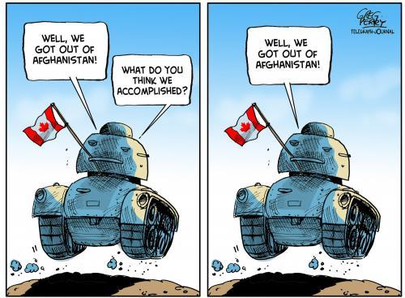U2L1 National Interest and Foreign Policy
U2L1
Lesson
![]() RESOURCES
RESOURCES
Read and refer to Chapter Five as your resource for completing this lesson's assignment.
Chapter Five Highlights
World War One and the Treaty of Versailles
First Total War
Western Front Animated Timeline
National Interest and Foreign Policy
National Interest Summary
Battles of World War One
![]() LESSON
LESSON
What are national interests? As you learned in the first unit of this course, nation-states or countries have a population composed of citizens with common interests, beliefs and values. That is, if you went out and interviewed Canadians across the nation, you would likely find that their answers to questions about health care, education, government spending and Canada’s role in the international arena would be quite similar, not identical, but close to each other. Shared beliefs and values ensure that government leaders will remain in power only so long as they work toward goals the citizens believe to be important.
Nations make decisions based on what is in the nation's interests. National interests focus on one or more of the following:
|
Economic Prosperity This includes stable employment and a decent standard of living. Governments acting in the national interest try to provide these economic benefits in ways such as passing laws ensuring that citizens are not exploited in the workplace. They may also enter into trade treaties with other nations. |
Security and Safety Measures to maintain national security and physical protection include laws that protect citizens within the country, as well as secure borders that can be defended against intruders. |
Beliefs and Values These include affirming and promoting citizen's values, beliefs, and culture. Governments acting in the national interest try, for example, to safeguard and respect the shared worldviews, ways of life, traditions, and languages of their citizens. |
View the following power point and make your own summary notes:
National Interest and Foreign Policy
World War One
World War I was fought in Europe, the Middle East, Asia, and Africa. On one side were the Central Powers, led by Germany; on the other were the Allies, led by Britain. The world had never experienced such a wide-ranging and deadly war. Millions of people died, and the financial cost was enormous. Before World War I, nationalism had flourished in Europe. Many historians believe that nationalism and people's beliefs about their national interest were important causes of this war.
National Interest
The Treaty of Versailles
Some people believe that it was too harsh. Others, such as Ferdinand Foch, the Allies' supreme commander, who had accepted the German surrender on November 11, 1918, believed that it was too lenient. Foch feared that Germany would rebuild its military strength. He said, "This is not a peace treaty. It is an armistice of 20 years."
Canada in Afghanistan
The 9/11 attacks on the United States killed 2982 people, including 24 Canadians. It was generally believed that the Taliban rulers of Afghanistan were hiding and protecting Osama bin Laden and other members of al-Qaeda, which had claimed responsibility for the attacks. As a result, the United Nations agreed that the United States and its allies were entitled to invade Afghanistan to destroy the Taliban and track down bin Laden.  As part of its foreign policy after World War II, Canada had helped found NATO. The treaty that created NATO in 1949 said that an attack on one member would be considered an attack on all. As a result, forces from Canada and other countries, including the United States and Britain, went to Afghanistan under the NATO banner. The Taliban government fell, and Canadian forces helped keep peace while a new government was organized. But when the U.S. invaded Iraq in 2003, many of the American troops in Afghanistan were reassigned to Iraq. Canada then increased the size of their force and expanded their role to include active combat. The foreign policy shift was controversial. Most Canadians had opposed the Iraq invasion, and some now charged that the decision to increase the number of Canadian troops in Afghanistan was a way of helping the government solve a difficult problem: how to appear to support its American ally's war on terror while responding to public opinion by staying out of the war in Iraq. |
|
|
Consider the following issues that the debate over Afghanistan is believed to have revolved around:
|
Arctic Sovereignty

Watch the following videos...